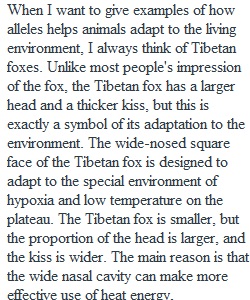


Q The plan here is to submit something on the Padlet below. I am asking you to identify natural selection in the real world around you. This can be a short video presentation, a photo, a figure, drawing, and some explanation. The idea is for other to see what you observed. The main thing to answer is "Do you see alleles (which are variants of a gene) that are more or less successful in terms if fitness in nature?" You can upload images, do voice, video, or type it in - it is cool to hear from everyone. We are starting out with a 100 students so this will get busy and interesting really fast. But the key thing here is that you cannot use something anyone else has already done! I will look at this Padlet and then put a grade in the grade book after I see your posting on the Padlet. Don't worry - it will be graded but remember to put your name on the posting!!! No need to post below in the discussion - just put something on the Padlet.
View Related Questions